This story, by Report for America corps member Carly Berlin and VTDigger reporter Erin Petenko, was produced through a partnership between VTDigger and Vermont Public.
After the Covid-19 pandemic hit, Vermont’s long-simmering housing crunch reached a boiling point. Home prices jumped dramatically, the state’s rental vacancy rate constricted, and its unhoused population tripled.
During that time, Vermont leaders funneled hundreds of millions of dollars into affordable housing development — including from federal pandemic stimulus packages, state surplus revenues, and other sources — an opportunity dubbed by many as “historic.”
“We need to put this money to work for working families,” Gov. Phil Scott said during his annual budget address in early 2022, about using federal stimulus funds to help plug Vermont’s housing deficit. “They’re depending on us, and with some creativity, and these historic resources, we can make this happen.”
There has been no comprehensive accounting of how much money the state poured into building housing in the first half of the decade, and how many homes it helped create.
VTDigger/Vermont Public gathered data on housing spending from the three major entities who oversee public funding for housing development in the state: the Vermont Housing Finance Agency, the Vermont Housing and Conservation Board and the Agency of Commerce and Community Development.
An analysis by the news organizations found that between 2020 and 2024, the state directed over $789 million of public funds toward building new apartments and homes for sale, and rehabilitating housing that had fallen into disrepair. That dollar figure includes money from state and federal sources, and encompasses programs new and old — including state initiatives begun in the months after the pandemic hit, and federal financing streams that have been available for decades.
That total does not include funding spent on homeless shelters and upgrades to manufactured home communities, nor does it include funds overseen by municipalities. It also excludes funding specific to flood recovery efforts. (Read more about our methodology here.)
The influx of public money helped create 2,249 new homes. Another 1,156 units were rehabilitated — a catchall term that includes everything from creating new apartments in an old school to preserving an existing complex as subsidized housing. Additionally, a new initiative aimed at renovating vacant apartments that had fallen into disrepair and building accessory dwelling units in homeowners’ backyards helped create 1,015 homes.
Generally speaking, housing projects need an affordability requirement to receive public funding, so the vast majority of these homes include some kind of income-restriction or cost cap for potential tenants and buyers.
‘Not enough yet’
Looked at one way, the windfall of federal funds helped kick the state’s affordable housing builders into “hyperdrive,” said Alex Farrell, commissioner of the Department of Housing and Community Development, who helped guide spending decisions after he began his tenure with the state as deputy commissioner in 2021.
Building permits have trended upward over the last five years for all types of housing, and the influx of funds helped shore up the low- and moderate-income end of the market during a particularly vulnerable moment, Farrell noted.

Looked at another way, though, the skyrocketing cost of building during this timeframe meant Vermont got far less bang for its buck than it would have in a pre-pandemic economy.
Couple that fact with the lengthy process involved in cobbling together funding sources for large-scale projects — along with lengthy government approvals, construction delays and legal challenges launched by neighbors in some cases — and it’s clear that the state has still yet to see the full impact of this windfall.
According to data provided by the Vermont Housing Finance Agency from its directory of affordable rentals, 866 new apartments opened up to potential tenants between 2020 and 2024. That’s only a modest jump from 696 new rentals first occupied in the previous five-year period, before Covid — highlighting just how long it takes for many larger-scale affordable housing developments to come online.
“So far, our inventory of all the affordable housing in the state doesn’t yet show the big increase in homes that has resulted from this massive infusion of money,” said Maura Collins, executive director of the Vermont Housing Finance Agency.
And publicly-subsidized affordable housing only makes up a modest fraction of the overall market. Against the backdrop of the state’s severe housing shortage, the boost in funding during the Covid years did not prove enough on its own to correct course. About 2,400 building permits for all residences — not just affordable housing — were issued annually between 2020 and 2024. But recent assessments show the state must double or triple that pace to get the housing market to a healthy state. Meanwhile, homelessness remains at record levels.

For the people who gained an affordable place to live because of the state’s massive investment in home construction, the funding made a world of difference, said Gus Seelig, executive director of the Vermont Housing and Conservation Board.
But “if you look at it from the way the housing market has changed, you’d say: ‘Not enough yet,’” he said.
New neighborhoods
As this money began flowing into the state, developers began charting out some of the biggest affordable housing projects in Vermont in recent memory. On the large end of that scale: entirely new neighborhoods.
One such development is tucked behind a mattress store and a Nepalese restaurant in Shelburne, once home to an Econo Lodge motel. The nonprofit developer Champlain Housing Trust purchased the property more than a decade ago to operate it as emergency housing for people experiencing homelessness, but the trust’s leaders had long dreamed of redeveloping the five and a half acres off of Route 7 into something more.
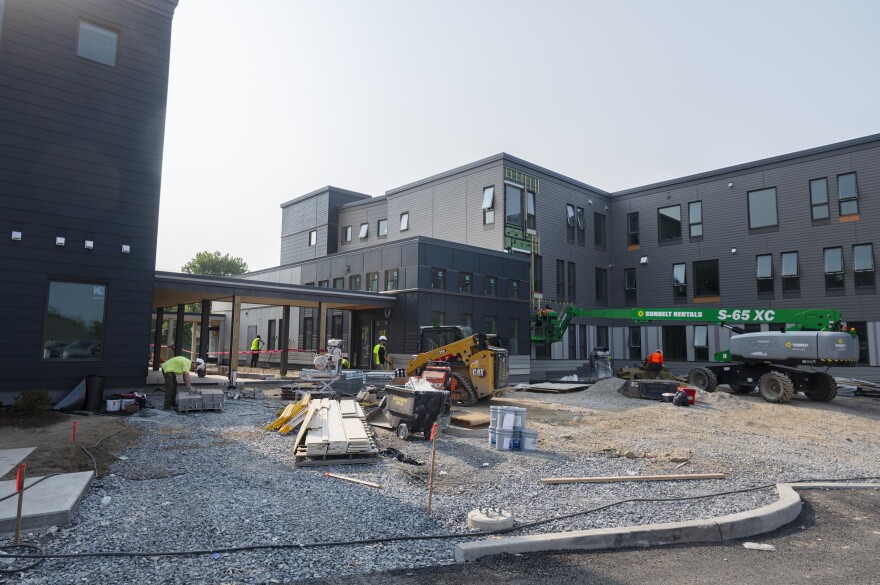
That transformation is now nearly complete. One morning in early August, construction workers buzzed around the property, putting the finishing touches on 68 income-restricted apartments which will stay affordable in perpetuity.
Some homeowners had already moved into more than two dozen brand-new, shared-equity condominiums, their potted plants lining balconies overlooking a freshly-paved road. Those condos are selling for under $190,000 each. Their market values are estimated at more than twice that amount — around $485,000, according to the trust’s website.
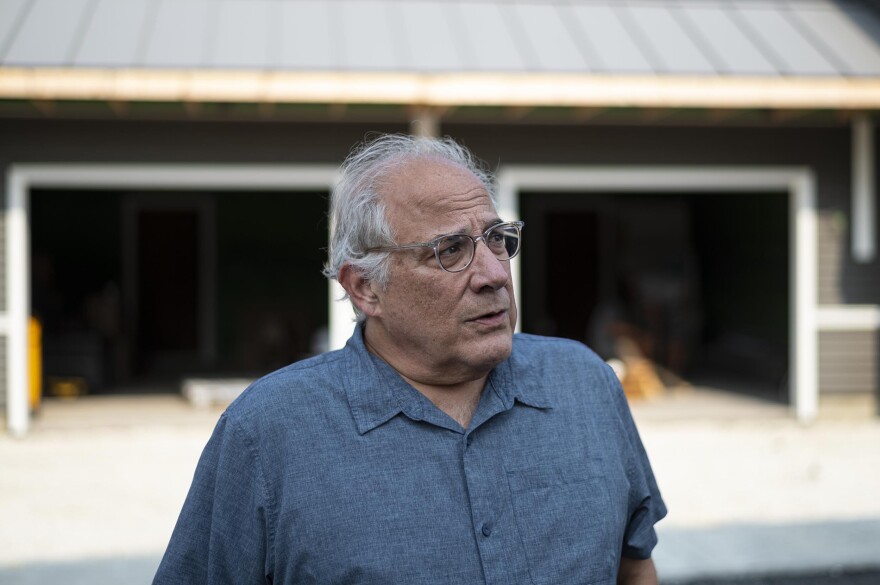
Michael Monte, the trust’s CEO, took in the scene. “When you see people beginning to own their own homes and are just so happy when they move in, or when people move into their rental housing and finally have stable housing…” He paused as a power tool roared. “Big difference.”
This Shelburne project, called Bay Ridge, is among the largest recipients of the state’s Covid-era windfall.
Publicly-subsidized affordable housing projects typically bring in funding from a wide array of sources, and Bay Ridge is no exception: a funding source breakdown provided by Monte includes 25 different budget lines. A few of the biggest streams of funding for the project stemmed from the pandemic-era funding push, including more than $10 million of federal stimulus funding for the rentals, along with a $4.8 million from a Covid-era program dedicated to building middle-income homes for purchase. The single largest funding source was over $14 million in private equity from federal tax credits.
The total price tag for the project came to about $55 million, for both the rental and homeownership portions. That means it cost a whopping $602,000 on average to build each of the 94 total homes. That’s not a far leap from the average per-unit development cost of new affordable rentals last year, which was over $500,000.
“It’s sometimes shocking to me to look at the dollar amounts that we’re talking about,” said Collins, from the Vermont Housing Finance Agency.

Collins often thinks about the number of homes Vermont could have built with this cash under pre-Covid economic conditions. But high interest rates and a rapid rise in construction costs in the pandemic years dampened how far the funding could go. According to a 2019 VHFA report, the average per-unit development cost of affordable rental housing in Vermont between 2009 and 2018 was about $216,000.
“It has been daunting to watch the amount of money going out the door, creating not as many homes as [it] would have been five years ago,” Collins said.
Those factors have hampered building throughout the entire housing market. Yet building affordable housing with public funds has its own distinct cost-drivers.
When developers piece together state and federal funding sources, they must then comply with a thicket of state and federal rules. Some federal funds in recent years came with requirements to source materials inside U.S. borders, a rule that has proved onerous for many affordable housing developers. Within Vermont, developers might seek to make a building highly energy efficient to get priority access to funding, or build in a downtown location that might have toxic soils that need to be cleaned up, or need to set aside a share of units for people exiting homelessness and provide services for those tenants.
“When we say we’re building affordable housing, we’re doing so much more than that,” Collins said. “But…when public money comes with too many rules and regulations, then we need to look at if there are quicker, easier, better ways — so that we’re not inadvertently adding to the cost of housing through the way we do things.”
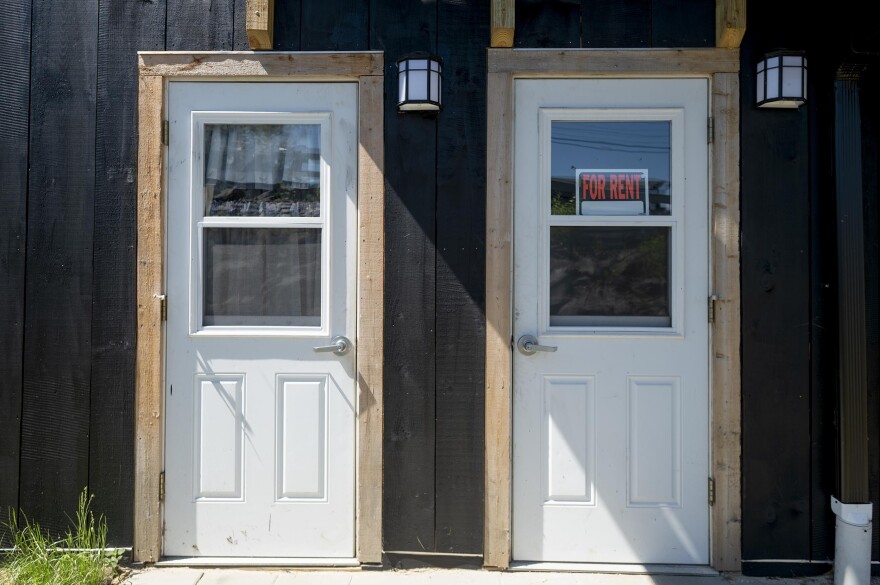
‘A lot of units at a very low cost’
At the opposite end of the spectrum, state officials also used Covid stimulus funds to dole out relatively modest grants for small-scale housing projects, like helping homeowners build accessory dwelling units and rehabilitating apartments that had fallen into disrepair.
The state’s main vehicle for these types of projects is the Vermont Housing Improvement Program, or VHIP, which launched in 2020. VHIP continues to provide funds to landlords and developers to fix up existing vacant rentals that need repairs in order to meet safety codes and add new units onto existing buildings.
Between 2020 and 2024, the state spent $38.7 million on VHIP grants and loans, which helped produce 1,015 homes. The average grant is $38,000, according to state data. Property owners have to match at least 20% of the funds they get with their own money.
“What’s exciting about VHIP is it delivers a lot of units at a very low cost,” said Farrell, the housing commissioner.
David Begin stumbled upon the VHIP program when catching up on the news in 2020. A master plumber with a family rental business in Canaan, a town of fewer than 1,000 residents in Vermont’s far northeastern corner, Begin decided to apply for a grant. He received $30,000 to rehab an abandoned duplex, he said.
“There’s a family of four kids and mom and pop living in it. Been there for five years,” he said. The four-bedroom apartment rents for $950 a month.
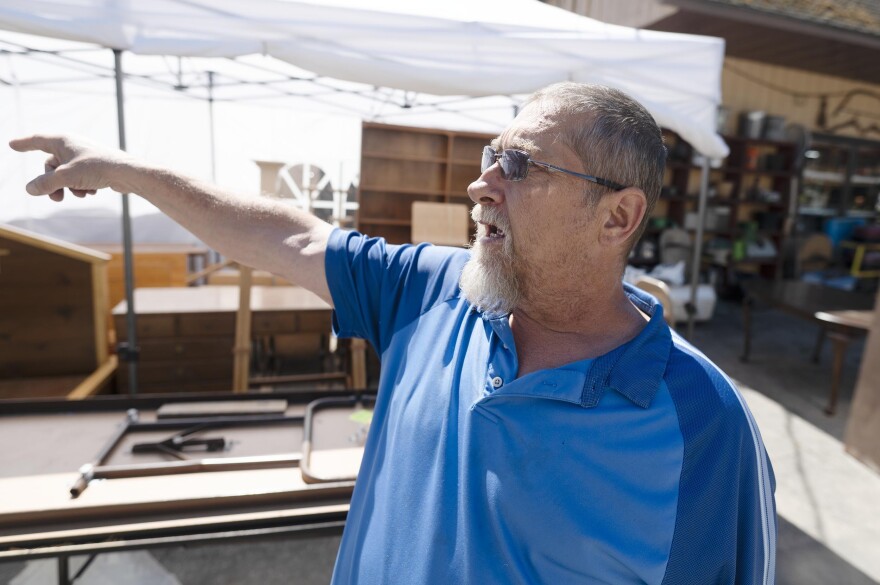
VHIP has a different philosophy than most large-scale affordable housing developments in Vermont. Rather than require that the homes stay affordable permanently, VHIP’s original iteration stipulated that the rentals remain under the federal government’s “fair market rent” standard for five years. (The current version of the program has a 10-year loan option.) The program also mandated that funding recipients prioritize vulnerable tenants, like people exiting homelessness and refugees.
As the rules start to lift this year, some landlords will face a choice: keep renting to their current tenants at below-market rates, or raise prices and threaten eviction.
According to data provided by the Department of Housing and Community Development, 68 homes will hit the end of their affordability-compliance period in 2025. Another 157 will hit that cliff next year.
Farrell, the housing commissioner, said initial conversations have led him to believe many landlords intend to keep renting at below-market rates.
Begin is one of them.
“We got good tenants… and we’re happy with what we’re doing,” he said. He was pleased enough with his first VHIP experience that he went on to get a second grant to work on three apartments in an old post office building in town. “I don’t do that Airbnb thing. I’m more — take care of the local people,” he said.
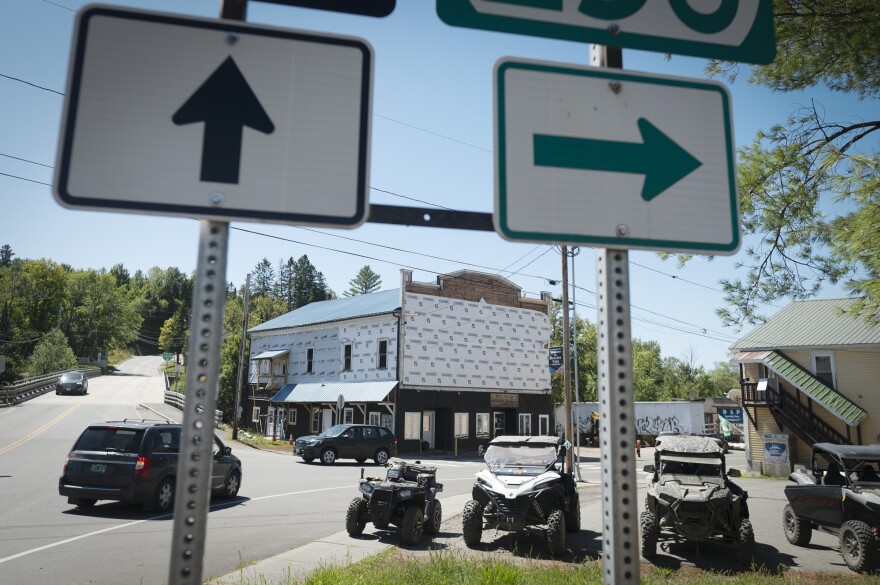
A blip?
For now, groundbreakings and ribbon cuttings for affordable housing projects that received Covid-era funds keep getting announced. But in the near future, as the federal dollars get used up, many housing leaders expect those celebrations to wind down.
“We’re going to see, two years from now, production of new units really fall off — unless, as a state, we make a choice that we’re going to figure out how to raise revenue,” said Seelig, from the Vermont Housing and Conservation Board.
The Democrat-controlled Legislature, which holds Vermont’s purse-strings, has yet to make that choice. In 2024, a bill that would have created new taxes on higher-earners to fund affordable housing production passed the House but died in the Senate. Lawmakers did not consider a similar proposal this past session. Some affordable housing boosters, like Monte from Champlain Housing Trust, hope legislators will take up the idea again in 2026. The prospect of success appears dim, though, as tax-averse Republicans have gained more traction in the Statehouse with the backing of Scott, a Republican.
That political dynamic leaves Vermont leaders with less funding to pour into affordable housing as federal support for housing and homelessness is threatened under the Trump administration — and as Vermont’s need for more homes remains stark.

As the Covid-era stimulus funds have run dry, lawmakers and the governor have enacted other policies to try and tamp down housing costs and spur more building, from land use reforms to financing tools aimed at boosting the infrastructure needed for new construction.
In an executive order aimed at boosting more homebuilding issued this week, Scott noted that despite the “unprecedented, focused commitment of state resources” during the pandemic years, Vermont still has a deep housing deficit — which, he argued, “can only be addressed through more private investment, and substantial regulatory reform.”
Collins, from the Vermont Housing Finance Agency, sees plenty more room to streamline the homebuilding process. Vermont must flood the overall market with homes to regulate supply and demand, she noted.
“But if there’s not funding… then I’m worried that while we’ll be helping all housing, we may run the risk of having affordable housing — and housing for the lowest-income Vermonters — fall short,” she said.
If Vermont strays from its focus on the housing issue, she said, the Covid-era boost in building affordable homes will be nothing but a blip.
Methodology
VTDigger and Vermont Public gathered data on housing spending from the three main agencies that oversee housing funds in the state: the Vermont Housing Finance Agency, the Vermont Housing and Conservation Board and the Agency of Commerce and Community Development.
We looked at funds spent on housing development between 2020 and 2024. Our dataset includes funding that flowed through the three agencies from federal Covid-era stimulus packages like the 2020 Coronavirus Aid, Relief, and Economic Security Act and the 2021 American Rescue Plan Act. It also includes state General Fund surplus funding — because it was the result of additional federal aid statewide — as well as regular state and federal financing streams for housing spent during this timeframe.
Housing agencies distributed the money through a combination of loans, grants and tax credits. We opted to include all of these sources in the total amount spent, including “construction loans” that were paid back after buildings were completed, because this funding source ultimately played an important role in the total outlay of funds in the time period we reviewed.
Our goal was to look at new units added to Vermont’s housing stock with these funds. That was not always possible based on how the agencies reported whether units were “new” or “rehabbed.” In inter-agency datasets provided to us by VHFA and VHCB, for example, “rehab” is a broad term that includes both existing affordable housing projects getting renovations to increase longevity, as well as older buildings getting turned into apartments for the first time. We opted to include this broader category of “rehab” units in our analysis in order to capture a fuller picture of new homes added to Vermont’s housing stock, and because removing them from the datasets would have required project-by-project research.
Apartments rehabilitated through the VHIP program need to be vacant by definition, with the repair money going toward bringing the unit back up to health code standards. (In a small number of cases, grants have been awarded to occupied rentals for urgent health upgrades; in those instances, property owners were required to house tenants elsewhere while renovations took place.) Therefore, these are effectively apartments reentering Vermont’s housing stock — so we included them in our analysis.
We opted to exclude certain kinds of rehab projects that did not straightforwardly add homes to Vermont’s housing stock, including funding for homeowner health and safety repairs and infrastructure work at manufactured home communities. We also excluded funding for housing projects that serve hyper-specific subpopulations, including farmworkers and people with intellectual and development disabilities. We excluded shelters for people experiencing homelessness.
We thoroughly reviewed the data sources to remove duplicate projects between different agencies and different years. We also fact-checked our methodology with each agency to ensure accuracy.
Regardless, with any data project there are some caveats. To arrive at the total amount of funding, we combined different programs that utilized a combination of tax credits, loans and grants, meaning that when and how money was outlayed could vary from project to project. While we researched many projects in the course of our reporting, we did not fact-check the details of every project with its individual developers.
We also included two data sources in the story to help contextualize the Covid-era funding figures. One is the Vermont Housing Finance Agency’s online database of affordable rentals, which allowed us to look at the overall construction of affordable rental housing before and after the start of the pandemic. The other was the U.S. Census Bureau’s survey of building permits, which captured new construction of both affordable housing and market-rate housing in Vermont.
For questions or concerns about this methodology, please contact data reporter Erin Petenko at erin@vtdigger.org.





